The ‘On the Road with Jim Dean’ series kicks off with an Intimate Tour of Berkshire County … “Where it all began.”
…by Jim W. Dean, VT Editor
[ Editor’s Note: This 2012 trip was my last visit with my mother, a three week record stay for me. I brought my TV camera and went out during the day to video the historic sites I had seen so little of after I went off to NC State in 1967 on my yellow brick road.
WWII navy vet Chuck Wales below is dead now. I am still trying to find his next of kin. He had a family tie in, as he was the depth charge on deck officer on a destroyer sunk in the same convoy in which my mother’s first husband died on the SS Paul Hamilton. In a torpedo bomber attack, 500 men and 6000 tons of explosives went up in a huge mushroom fireball.
Chuck was a senior athlete, being over 90, with a blacksmith shop in back of his house, still skiing every winter, and had only recently sold his glider after a friend was killed crashing his. Chuck had stayed in endurance shape with cross country winter skiing, and with canoe and bicycle racing in warm weather.
I have fabulous interview footage of him to put on a web archive when there is ever a point I can begin archiving and databasing all my video footage, so it can be keyword databased down to topic segments, so they can be pulled up with a key word search.
I had never anticipated that VT would be the non stop 365 days per year dragon that it has been, where if we stopped, we just get left behind.
The Berkshires have been hammered hard with Covid because tourism is its lifeblood. The silver lining is that Covid has kept the real estate market strong, as the summer home people moved in to hide from Covid and have money so spend. Great Barrington was voted the best small town in American by Smithsonian Magazine a few years ago, and this put it on the tourist map big time… JD ]
 Jim's Editor’s Notes are solely crowdfunded via PayPal
Jim's Editor’s Notes are solely crowdfunded via PayPal
Jim's work includes research, field trips, Heritage TV Legacy archiving & more. Thanks for helping. Click to donate >>
– First published June 10, 2012 –
![brightrainbow[1]](https://www.veteranstodayarchives.com/wp-content/uploads/2012/06/brightrainbow1-e1339282225875.jpg)
I am about to wrap up an almost five week home visit to Berkshire County, Massachusetts to kick off a long planned ‘On the Road’ series.
Just before I left on this trip, my home town of Great Barrington was selected by Smithsonian.com as the best small town in America among twenty contestants. It was a good omen.
At the old train station, I filmed a Saturday morning organic farmer’s market. They had ‘to die for’ breads, grass fed beef, and maple syrup among their goodies. And I got some salt of the earth stand up interviews with the vendors.
Local businesses, especially the restaurants, make a special effort to use all the local products they can to support the last of the family farm community.
As a child, I remember beginning my first trip to my mother’s family Mississippi farm from this train station, the beginning of my own magical mystery tour, a love of new experiences and faraway places which lasted for many years.
I have vivid memories of uniformed servicemen constantly surrounding us, lifting every bag, providing every assistance. But I would not learn till many years later that mother had been a Gold Star wife at age 16. When she had mentioned this to the soldiers on the train, they formed a protective circle around her. We got the Hollywood star treatment.
A confluence of events brought me here, like not being home for sixteen years, my 45th Berkshire School reunion, mother turning 85 this past week, and having always wanted to add some gorgeous Berkshire video footage to my Heritage TV archives.
A short trip would have only put a dent into what I needed to get, but fate provided me a larger get-a-way opportunity. I am coming back to Atlanta with lots of new footage and a host of new friends.
This new material and my Heritage TV archives will be used on VeteransToday, as we continue developing our Living and Arts section. We all need some escape from the blood and guts of much of our daily fare here.
My original plan was to create a variety of series which would be easy to find in our huge 20,000+ article archive and broaden the public’s view of veterans beyond their military service. For many veterans, their post active duty life was the major part of what they contributed, not only to the country but to humanity.
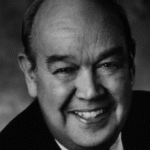
One of my early TV heroes was Charles Kuralt for his On the Road and Sunday Morning CBS series, which won him several Peabody awards.
Even as a kid I thought he had one of the best jobs in America, traveling the back roads to share the gems he found with the rest of us.
He had the gift of sprinkling in his special brand of poetic and artist flare through every program. Sunday Morning routinely featured the fine arts, something not considered to be mass audience material back then. Kuralt was ahead of his time, and we are all the richer for it.
So my On the Road with Jim Dean series is hereby birthed with this piece being just a preview of what is in the pipeline, including lots of great footage.
My first major venue stop was the Hancock Shaker Village a few miles west of Pittsfield, Massachusetts, the largest city in the Berkshires. As the Shakers did not reproduce, as in children, their numbers dwindled over the years with just a small community in Sabbath Day Lake, Maine today. But their legacy lives on, as my visit confirmed.

But with no fooling around allowed, there was a lot more time for work, and work they did. The Shakers left a legacy of industriousness and innovation which one would not expect for a group living a great deal in isolation as they did.
For example, the next time you use a flat broom, you are using a Shaker invention. I have footage to show you how they were made. And Shaker baskets are collected the world over.
Some of you vets might ask, what is the veteran tie in for all of this?
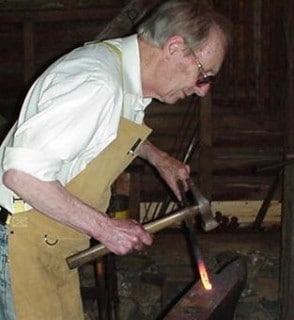
At the Shaker Village my tour host was Chuck Wales, a 90 year old WWII Naval Academy grad, whose destroyer the USS Lansdale was sunk in the same convoy in which my mother’s first husband, Leon, was killed, as Leon’s ship, the SS Paul Hamilton was torpedoed with 580 men and 7000 tons of explosives aboard.
Chuck had lived five miles from my mother for 55 years, but they had never met. Chuck, by the way, is one of the Shaker Village blacksmith demonstrators, something he took up at age 77.
Last Wednesday, he cranked up their water turbine machine shop, all belts, pulleys and clutches, and demonstrated some of the work stations. This was a first experience for me.
The footage came out well because the Shakers put a lot of windows in their work buildings for natural light, and we had enough light to shoot in while the sun was out.
Chuck also gave me a detailed interview of what it was like to be sunk on the Lansdale, where many of his shipmates died; and he spent three hours in the oil covered dark water before luckily being found by a rescue boat. We call that rescue roulette.
He went on to have a long engineering career with General Electric in Pittsfield. For fun he biked 2500 miles a year, ran 500, and paddled his racing canoe to keep himself in shape so he could do his cross country skiing in the winter.
I was most disappointed to learn that his reaching 90 in great health was not a secret herbal remedy.
Gilded Age Country Cottages
![Picture 8[1]](https://www.veteranstodayarchives.com/wp-content/uploads/2012/06/Picture-81-e1339288697400-320x224.jpg)
The Berkshires are famous for their Gilded Age country cottages, often huge estates of forty to fifty rooms. I grew up with a seven story castle at the end of the street, and in my youth, I did not know that every town did not have a castle.
I shot several of these which included Naumkeag, the Choate estate, a national trust gem thanks to daughter Mabel Choate, who left not only the property but everything inside the house, down to the linens.
Filming Naumkeag was as close to entering a time machine as I have ever been. The 1958 newspaper was still on her night table and the doggie bowls on the butler pantry floor.
Mabel’s father had been a major New York City attorney and Ambassador to Britain for six years. He ended his career as an international peace activist, so he would have been welcome here at VT.
These estates were always sited for their magnificent views of the Berkshire hills, and most all were working farms during their earlier years. Most were used primarily as summer homes, with the owners retreating to their city abodes for the rest of the year. The rail lines from New York City to the Berkshires made the commute a scenic tour in itself.
Edith Wharton Estate
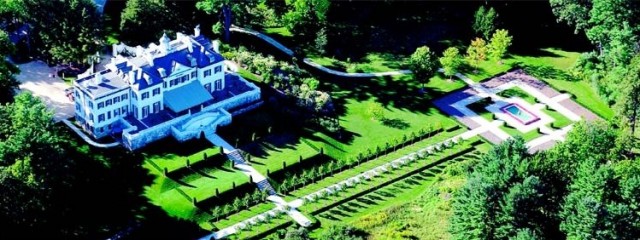
Edith Wharton, who wrote forty books in her illustrious career which including being the first woman to win a Pulitzer Prize for fiction. A master house builder and gardener she had The Mount built in 1902.
As with many other Berkshire ‘cottages’ the property had changed hands many times after she sold it when moving to Paris, but it is now in a trust which has spent years refurbishing it to its former glory, including the gardens.
The Mount acquired Edith’s library a few years ago. The English book dealer who had purchased it from one of the sons had held onto it all of these years, and the trustees were able to work out an acquisition and bring her books back home to the Berkshires.
These properties are run by a mixed group of trustees, boards, conservators, local arts and historical groups and always needed volunteers…your classic ‘it takes a village’ mix of talent and love.
Most all of the venues welcomed VT in to shoot. We seemed to have been the first international veterans online platform to show an interest in featuring their work to our readers. But as you will see below, veterans have played key roles not only in American historical preservation and education, but also the arts.
The Sterling Clark Museum
The Clark Museum in Williamstown, Mass., was the largest that I visited, requiring two trips. Sterling Clark, a Singer Sewing Machine company heir, was a young Army officer who served in the Boxer Rebellion campaign in China.
He and his French actress wife later became major art collectors, the quiet kind that never put their treasures on display. But in their later years, they funded the building of the Clark Museum and donated their entire collection. On opening day, the public saw for the first time their huge collection.
The current trustees have expanded the scope and holdings for the museum on their 140 beautiful acres of north Berkshires County hills, where art and nature are woven together. This combining of natural and man made beauty is a Berkshire staple and the foundation of its tourism business.
The Clark has one of the best art history libraries in North America and a graduate program co-sponsored with Williams College and the Sterling and Francine Clark Art Institute. The master expansion plan continues to update older facilities, construct new ones, and coordinate the usage with its traditional Williamstown neighboring entities.
Williams College
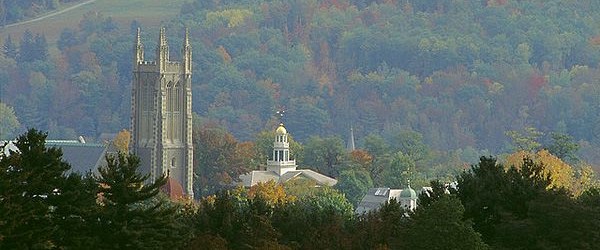
Neighboring Williams College was also founded by a military veteran. Colonel Ephraim Williams Jr., was killed in action in the Battle of Lake George during the French and Indian War. He wanted a free college established, which was done via his will, but unfortunately was not feasible to continue as such.
Williams has become one of the finest of the smaller liberal arts colleges in the country, with around 2200 students. But it is not small in facilities or resources, with its recently completed $60 million theater and art complex.
Although relatively expensive, it has an incredible financial aid program, where ability to pay is not a critical consideration for entry. Full rides are available for those who are the best of the best. As usual, strong alumni and endowment programs support this level of educational commitment, making Williams College the educational crown jewel of the Berkshires.
Everywhere you look in Williamstown, there is a postcard scene, and I have saved the predicted sunny day this coming Monday for my last shoot at the Clark Museum, and to film some of the town sites and scenes.
Norman Rockwell Museum
The Norman Rockwell Museum was a first time visit for me. I had seen him a few times as a boy when out on family drives. He was well known for being spotted on his afternoon bike rides.
It was every kid’s dream to be selected as a Rockwell painting model. The work was easier than you might think, as he extensively posed all of his models for photo shoots and actually painted from the photos.
The museum features this local involvement in the Rockwell art history with a monthly special event called ‘Meet the Models’…those who are still with us as time is harvesting them, also.
![studio-reinstall_carpet-lg[1]](https://www.veteranstodayarchives.com/wp-content/uploads/2012/06/studio-reinstall_carpet-lg1-e1339334514494-320x299.jpg)
I cannot describe how breathtaking it is to stand in front of the original paintings of Rockwell’s Americana as compared to the prints. My favorite has always been the huge Christmas in Stockbridge painting.
The museum’s state of the art website brings many of these images to you with just a few clicks. Don’t miss these.
One of the highlights of the trip was shooting the detail work of his artistic genius. I will share what I can with the VT audience, with the proper procedures and permissions.
The curators also allowed me to shoot his original studio, which had been sawed in half and moved to the museum site years ago and reassembled. There is something magical about being inside the actual studio where his art was created.
All active duty veterans are welcome to visit the museum as guests of the staff and trustees.
If you pass anywhere near Berkshire county and don’t stop in here you have missed out. Save your money for some lodging, as you need a few days to put a dent into catching the area’s highlights.
Arrowhead, Herman Melville’s farm
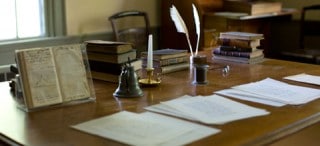
Yesterday I was hosted by Arrowhead, the Herman Melville Berkshire farm where he did much of his writing, and hung out with the likes of Oliver Wendell Holmes and Nathaniel Hawthorne, whom he met on a Monument Mountain hike.
As I drove up, I had to look twice at a new exhibit looking out toward Mt. Greylock, a large white Moby Dick diving into a sea of summer grass with a harpooner about ready to seal his fate. This surprise, actually a hay sculpture of Ahab and his nemesis, was created by local artist Michael Melle.
The Berkshire County Historical Society
The Society has all of their archives here, the result of many individuals and groups to preserve for safekeeping and pass on to future generations.
The Margaret H. Hall Library and Archives contains over 200 cubic feet of manuscripts, 170 linear feet of books, 150 maps and atlases, 350 oral history tapes, and 14,000 photographic images. Letters, journals, government records, newspapers, and directories dating from the early 18th century to the present can be found here.
It is a superb collection. What I would give to delve into all of those oral histories and photos but alas I had to keep moving along to my next stop for the day. A return visit will definitely be needed to enjoy these treasures.
Jacob’s Pillow
Jacob’s Pillow is a sterling example of mixing all types of dance artists in the Berkshire Hills. It is the only National Historic designated site for dance, and continues this tradition as a top international dance festival, and America’s oldest.
Founder Ted Shawn purchased the 1700’s era farm to build a summer retreat for his all male dance company at the time. His legacy lives on in the Pillow’s reputation of bringing alumni dance celebrities back every year to perform and teach new generations of emerging dancers.
“He was keen of wit, caustic of tongue, avid of interest, terrifically temperamental, of inexhaustible energy, tenacious, aggressive, indomitable…of the stuff to become the first male dancer in America to achieve a position of influence and importance.” – John Martin, America Dancing
The staff hosted me twice and one of the surprises I learned that during WWII they took a big personnel hit when many of the dancers, all men at that time, left to join the military after Peal Harbor.
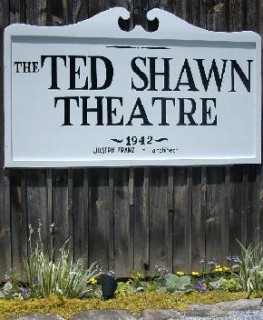
But director Ted Shawn was steady at the helm, pushing to build the now famous Ted Shawn Theater in 1942 so that ‘the dancers would have something to come back to when the war was over’. And come back they did, and on the G.I. Bill, which helped the Pillow get its momentum back after the war.
The Pillow is celebrating its 80th season this summer, where they have a mix of performances, classes, lectures, picnics and trail walks on their 140 acres.
There are regular free events on one of the most incredible outside stages I have even seen, using the sunset over the Berkshire Hills as a natural stage setting…just breathtaking.
To my regret, I have never seen a live performance. But last year when I was doing trip research and ran across their website, I was thrilled to find they had put a huge effort into digitizing and archiving every shred of their history they could find.
They have made an extensive array of their ‘best of’ material available to a worldwide audience, all just a few clicks away. I shot an interview yesterday with the Pillow archivist Norton Owen, formerly a student in 1976 who came back to stay. And 37 years later, he is still working away with current executive and artistic director Ella Baff, who accepted the prestigious National Medal of Arts from President Obama on behalf of Jacob’s Pillow this past March.
Berkshire School
 Along the way with these major venue stops there has been a lot of scenic shooting. My old prep school, where I spent two years as a day student, Berkshire School provided a lot of shooting over alumni weekend, not the least of which was their million solar array farm, and their beautiful setting under Black Rock Mountain, above.
Along the way with these major venue stops there has been a lot of scenic shooting. My old prep school, where I spent two years as a day student, Berkshire School provided a lot of shooting over alumni weekend, not the least of which was their million solar array farm, and their beautiful setting under Black Rock Mountain, above.
Nearing the completion of a major upgrade to their facilities, Berkshire will continue to provide a world class secondary education to its international student body.
I am grateful to the school for my senior year scholarship and September senior year early acceptance to N. C. State University, which saw me off on another journey, although the chemical engineering part got lost along the way during those hectic Vietnam years where Skip Welles became my class’s first KIA.
Veterans Parade and Memorials
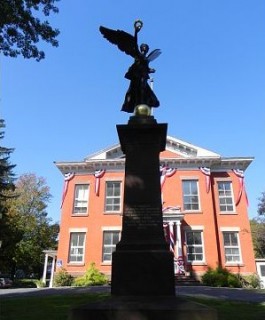
Memorial Day found me catching two small town events, more intimate than the big Atlanta one I have been attending.
I did the Great Barrington one of course, under their Civil War Yankee memorial, but also followed the vets down to little South Egremont for the 100 yard parade from the fire station to the war memorial and back again.
I was surprised to see how many WWII vets this village produced, including what appeared to be the entire male population of the Curtis family…with the last surviving daughter living across the street in her 90’s.
These little towns and villages all have their very old cemeteries. I am talking colonial era ones, with names that are hard to read. The fresh flags on the old graves caught my attention driving by South Egremont one day.
With just one look, I knew there had to be Revolutionary War graves there, and I was right, but also WWI, and all the others, including one fellow from Georgia.
We have our colonial cemeteries in the South, but usually only in the major cities where their larger grave stones remain. These cemeteries are sprinkled with Confederate Iron Crosses, whereas up here I have found that GAR markers, Grand Army of the Potomac, outnumber WWII ones. The alliegances were different, but the losses to the families the same.
Heading back from a Bash Bish Falls shoot one weekend, I stopped off at the little Mt. Washington cemetery. Again the new flags caught my eye. And yes, Rev War soldiers buried there, too, a tough place to live in those days due to the poor roads.
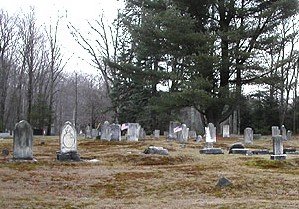
In one little corner, I found some contemporary stones for a Jewish couple, off by themselves, which is their tradition, Ed and Betty Davis, dying in 2003 as post WWII immigrants.
It was the first time I have seen ‘holocaust survivor’ on gravestones before, especially way out in the boonies on the top of Mt. Washington. I suspect they may have wanted to be away from a lot people, and were successful.
I have always considered all wars a holocaust, especially for those who were in them, including the families. Mother has three folded veterans flags, two husbands and a son…too many.
The family losses are universal ones, and special recognition for one group over another always dishonors another’s by sending them to the back of the bus, something in which I will never participate.
Getting out into the countryside to the film is always an enriching experience, which is why I do it. There are surprises and learning moments about the fortunate lives we live, much of it due to contributions of our ancestors. We only enjoy what was preserved for us and that which we can add, as I will be doing with this series.
But one lesson I learned, which I had been a bit foggy on, was the legacy of wealthy Americans who have donated their fortunes back to the American people in so many ways.
Veterans have always been front and center in this ongoing process, and we will continue to do our part in our unique way, with our platform here.
My thanks to all the Berkshire venues who contributed to my shooting trip. We will feature each of them here as I get the video footage edited out for a full multimedia effort, which they all deserve…and something that will last.
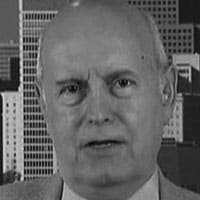
Jim W. Dean is VT Editor Emeritus. He was an active editor on VT from 2010-2022. He was involved in operations, development, and writing, plus an active schedule of TV and radio interviews. He now writes and posts periodically for VT.
ATTENTION READERS
We See The World From All Sides and Want YOU To Be Fully InformedIn fact, intentional disinformation is a disgraceful scourge in media today. So to assuage any possible errant incorrect information posted herein, we strongly encourage you to seek corroboration from other non-VT sources before forming an educated opinion.
About VT - Policies & Disclosures - Comment Policy


![NRM051009.19411[1]](https://www.veteranstodayarchives.com/wp-content/uploads/2012/06/NRM051009.194111-e1339333906127-640x208.jpg)
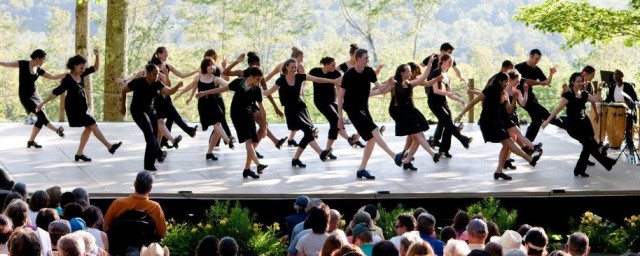



Agree with Andrew below, thanks for spending the time Jim.
Interesting places, human life, history, experience.
Thank you, Mr.Dean!
“…reaching 90 in great health was not a secret herbal remedy….”
The secret is like in old times true food and clean air, the opposite we have in big cities where you are poisoned every time you buy anything at local market manufactured with a bunch of chemicals, GMO food and all kind of toxic in air we breathe.
Comments are closed.